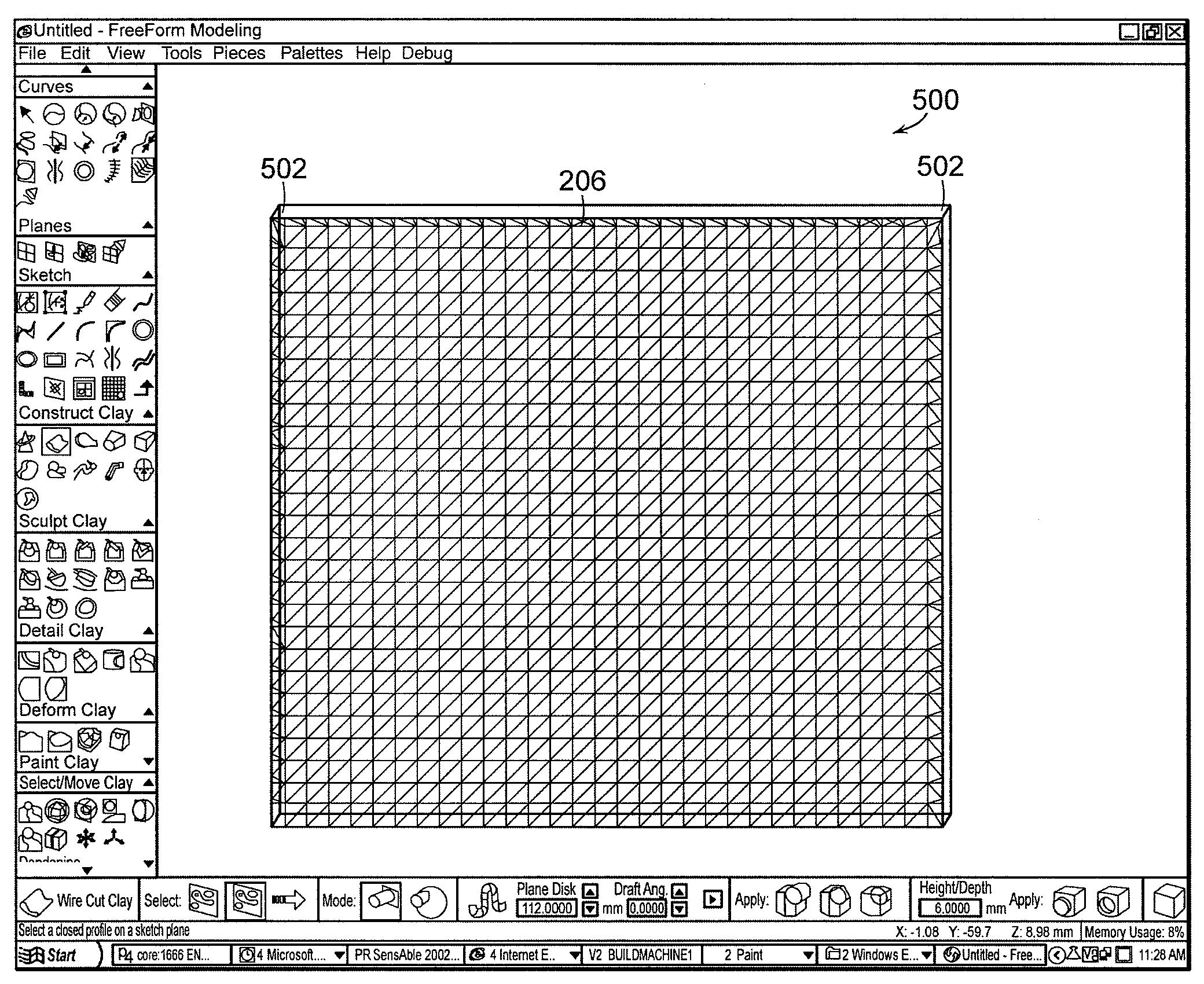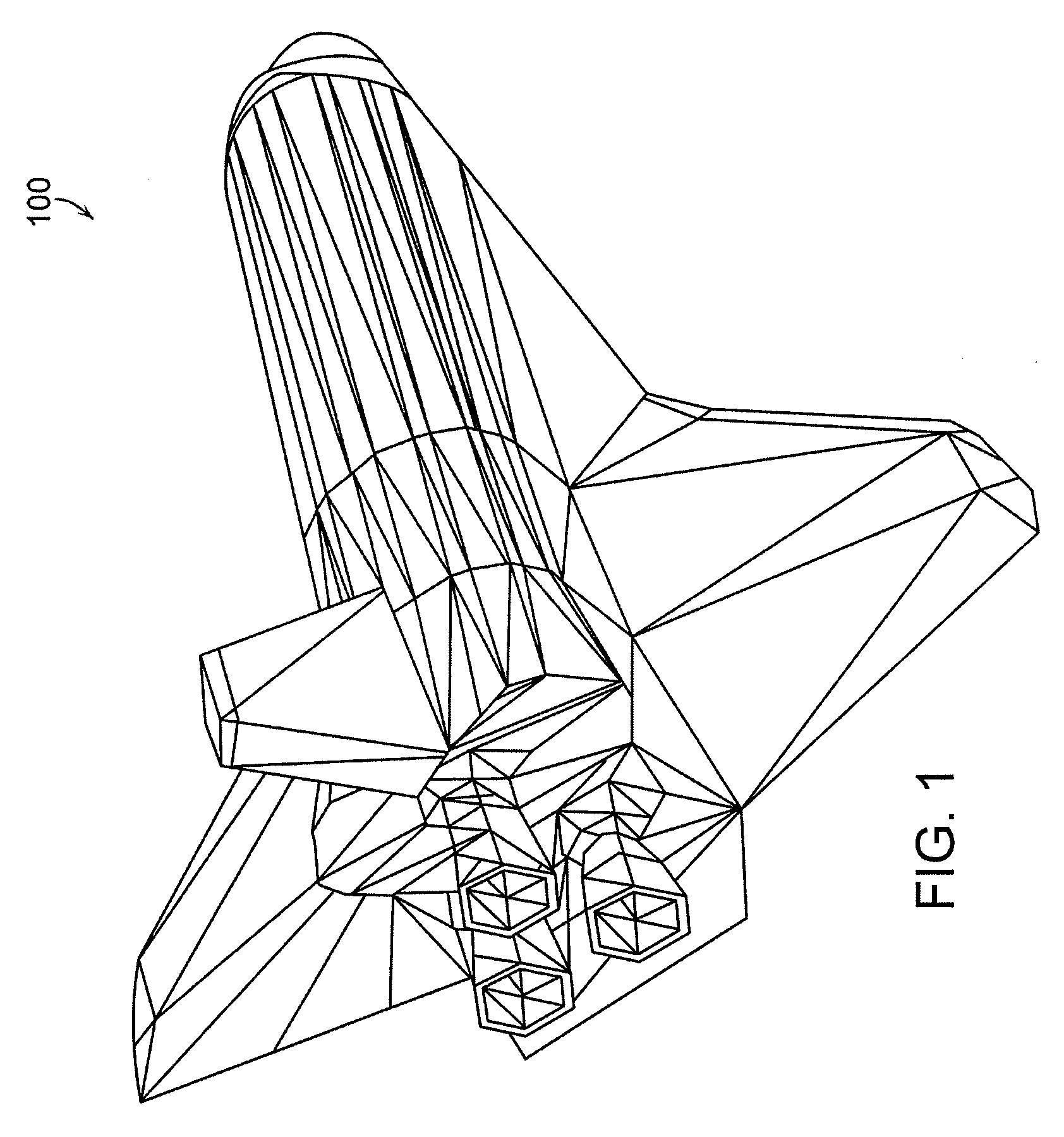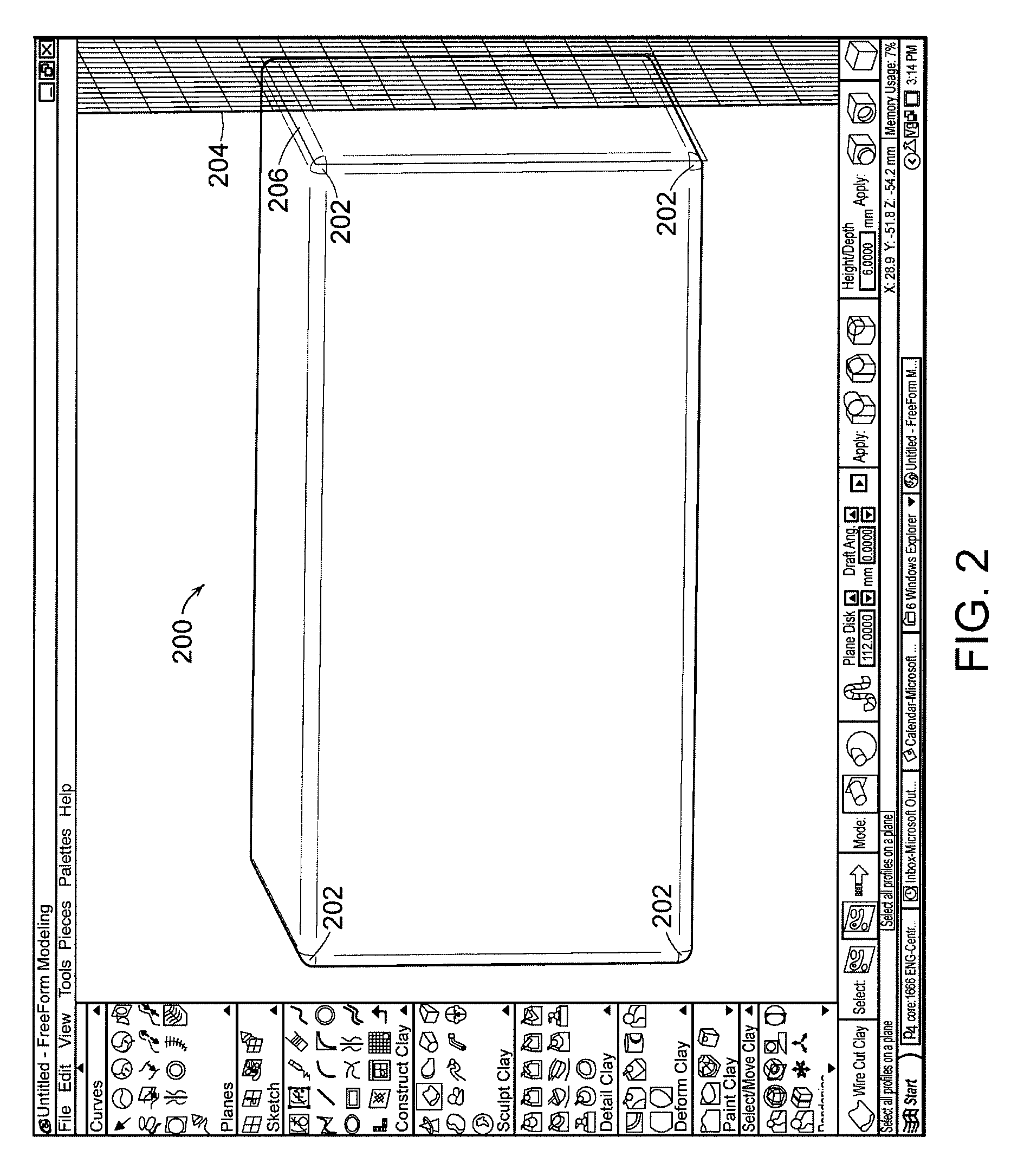Systems for hybrid geometric/volumetric representation of 3d objects
- Summary
- Abstract
- Description
- Claims
- Application Information
AI Technical Summary
Benefits of technology
Problems solved by technology
Method used
Image
Examples
Embodiment Construction
[0032]Throughout the description, where processes, systems, and methods are described as having, including, or comprising specific steps and / or components, it is contemplated that, additionally, there are processes, systems, and methods according to the present invention that consist essentially of, or consist of, the recited steps and / or components.
[0033]It should be understood that the order of steps or order for performing certain actions is immaterial so long as the invention remains operable. Moreover, two or more steps or actions may be conducted simultaneously.
[0034]The systems may include a PHANTOM® force-feedback device, for example, the PHANTOM® force-feedback device manufactured by SensAble Technologies, Inc., of Woburn, Mass., providing the operator with 3D navigation and the ability to use his / her sense of touch to model quickly and accurately with virtual clay. The operator can create original 3D models or use the systems with STL data from scanners or existing medical...
PUM
 Login to View More
Login to View More Abstract
Description
Claims
Application Information
 Login to View More
Login to View More - R&D
- Intellectual Property
- Life Sciences
- Materials
- Tech Scout
- Unparalleled Data Quality
- Higher Quality Content
- 60% Fewer Hallucinations
Browse by: Latest US Patents, China's latest patents, Technical Efficacy Thesaurus, Application Domain, Technology Topic, Popular Technical Reports.
© 2025 PatSnap. All rights reserved.Legal|Privacy policy|Modern Slavery Act Transparency Statement|Sitemap|About US| Contact US: help@patsnap.com



